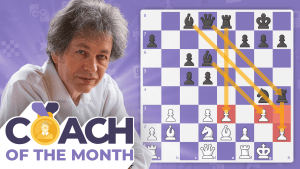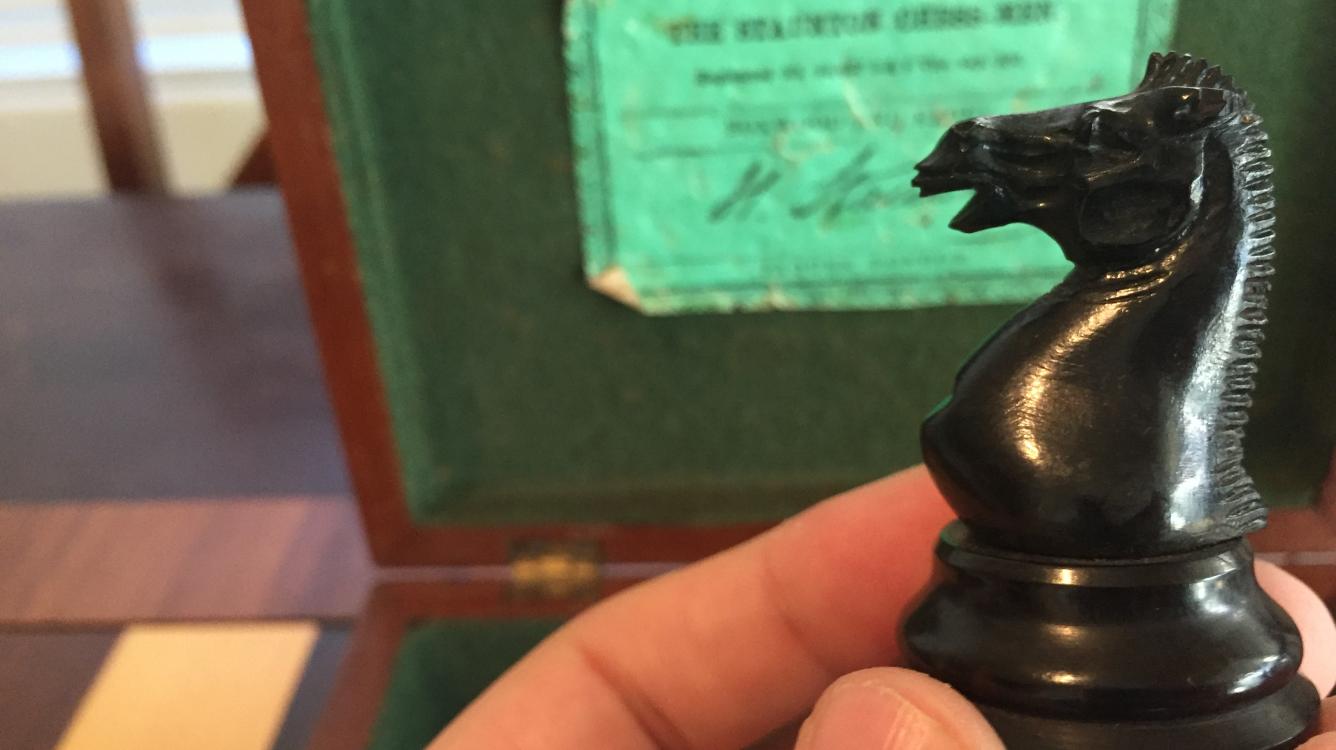
Top 5 Historical Chess Set Designs
There are thousands of chess set designs in the world and a large community of chess set collectors. There is an enormous amount of information available on the various chess sets types and designs on Chess.com's Chess Books & Equipment forum, which is full of knowledgable and serious collectors with vast personal collections.
Today we will take a peek into the world of chess set collecting by displaying five historical chess sets. Each highlighted set has been selected for its unique and iconic look as well as its usage in historical tournaments. These set designs happen to be some of the favorite chess sets for collectors as well.
Here are the top five historical chess set designs:
FIDE World Championship Set
The FIDE World Championship Chess set is the newest and most polarizing set on this list—some adore this set while others dislike it. It is still available for public purchase and was designed by the architect Daniel Weil.
The set was created for the 2013 FIDE World Chess Championship between GM Viswanathan Anand and GM Magnus Carlsen and was first introduced at the 2013 Candidates tournament. It is still used in top-tier FIDE events, including the 2020 Candidates and likely the 2021 World Championship match. It is a modified Staunton design, with original and unique-looking knights.
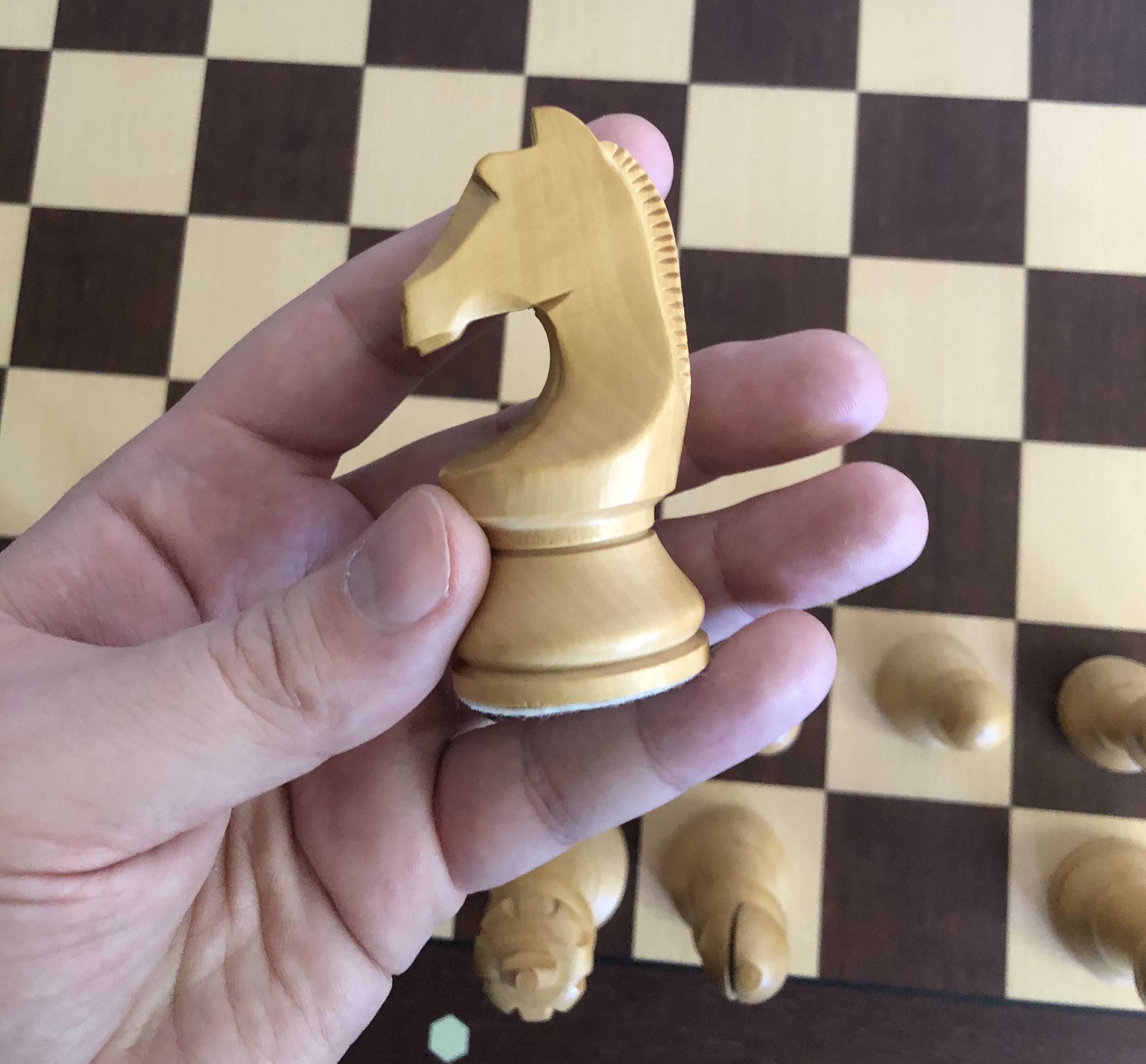
Most chess sets are differentiated by the design of the knight, as it is the piece that allows for the most potential for design changes. This knight is very different than any other knight, as it has a unique profile and does not have eyes carved out— instead, it uses cuts and shadows to create the solemn look on the knight's face. It is also notable as it is created from one piece of wood, instead of the usual two pieces (one for the stem and head, the other for the base).
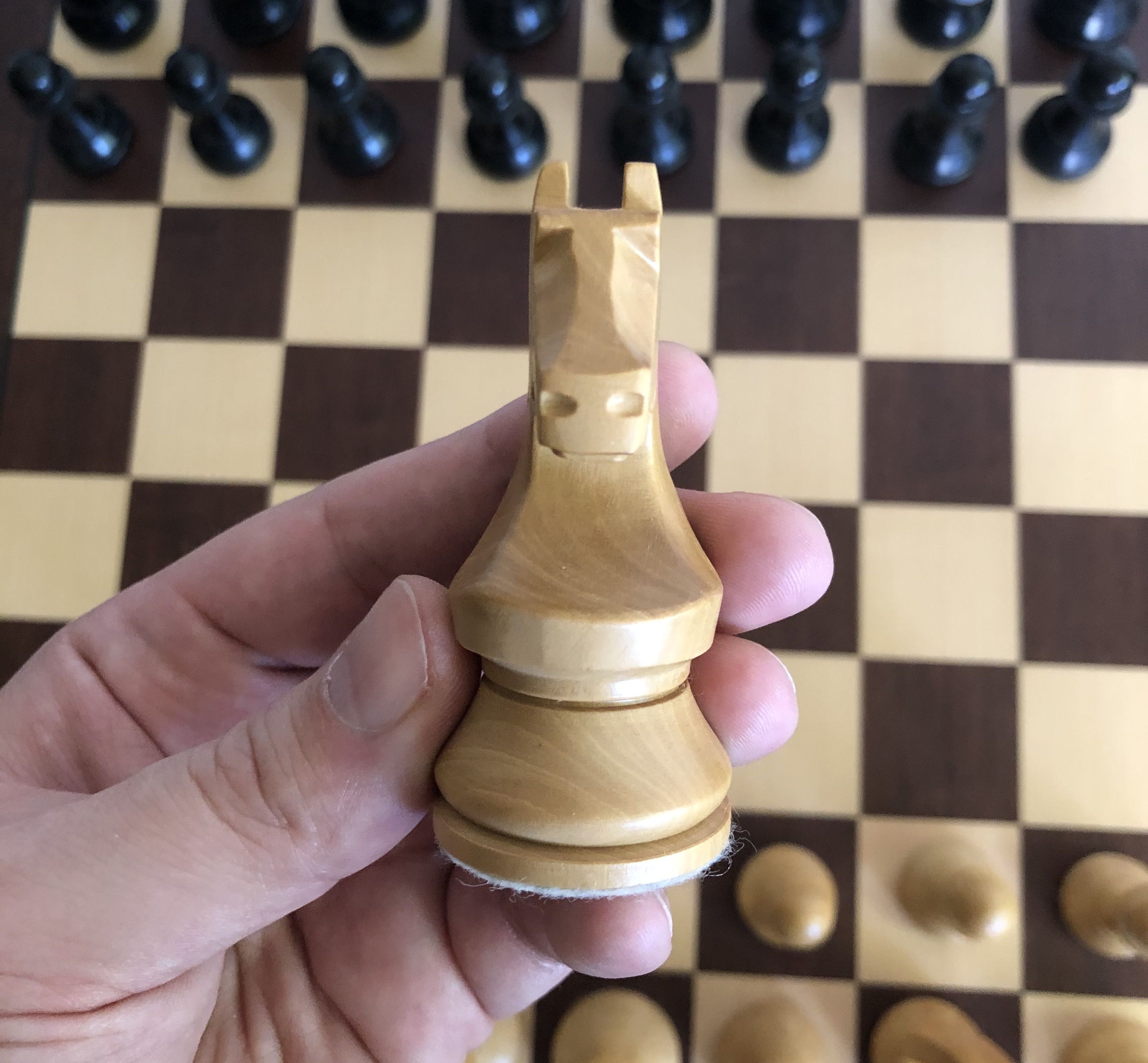
The tall pawns, the great crown on the kings, and long stems on the bishops, queen, and rooks make this set extremely pleasant to play with. However, there are some collectors who dislike this set (although the same can be said for any design on this list), as they don't like the knight—It is very difficult to like a chess set if you don't like the knight! Here is the full view of FIDE WCC set on the official board:
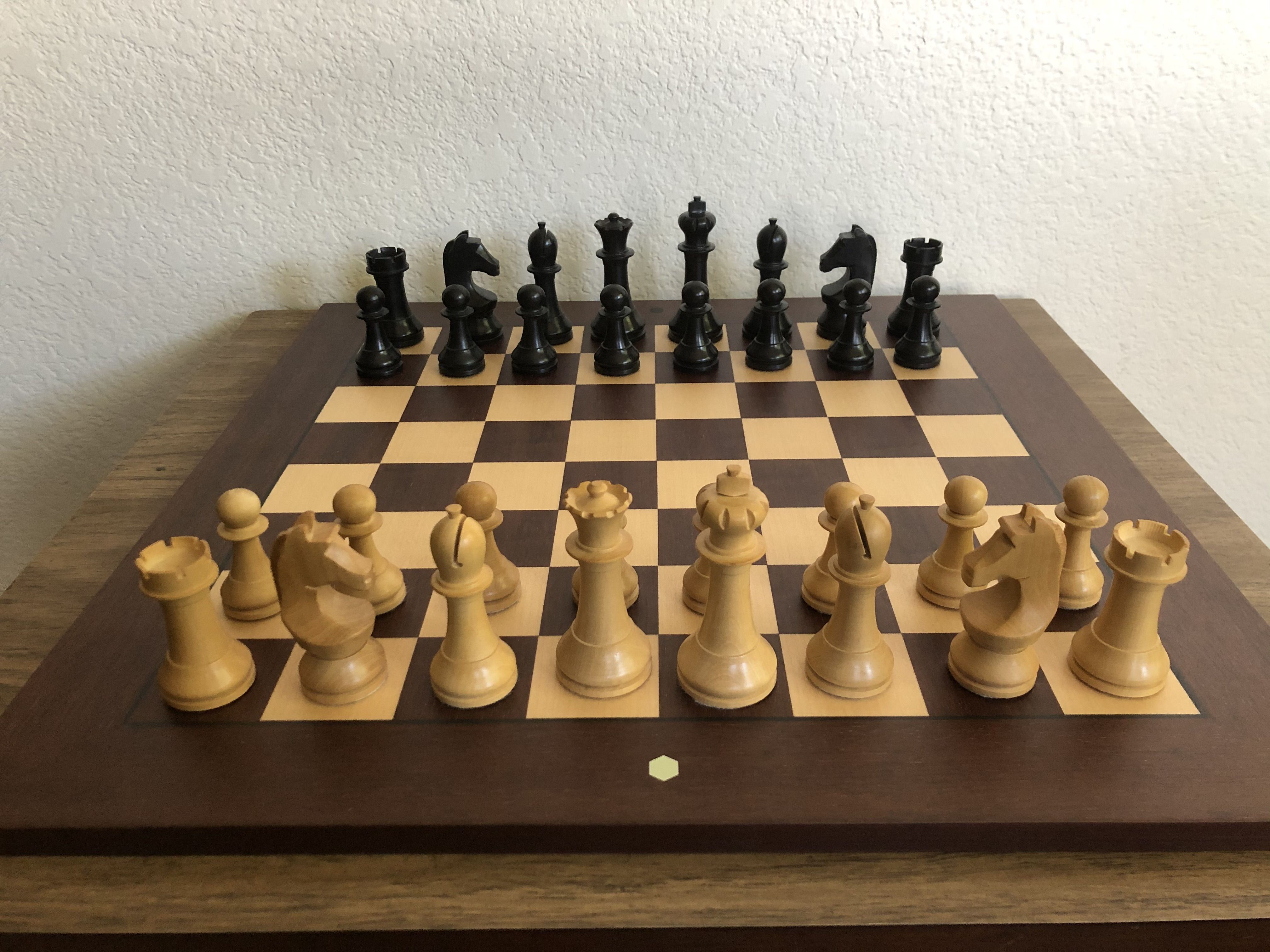

Lardy Sets
Anyone that has ever owned or purchased a plastic USCF tournament set will be familiar with the Lardy design. This is a simplified Staunton set design that is widely popular for tournament play in the Western hemisphere, but it was created by a French company, Lardy.
Lardy was founded in France in 1890 and made chess sets and other items until closing in 1992, but it exported a large number of these Staunton chess sets in the 1950s and 1960s to the United States, England, and other countries.
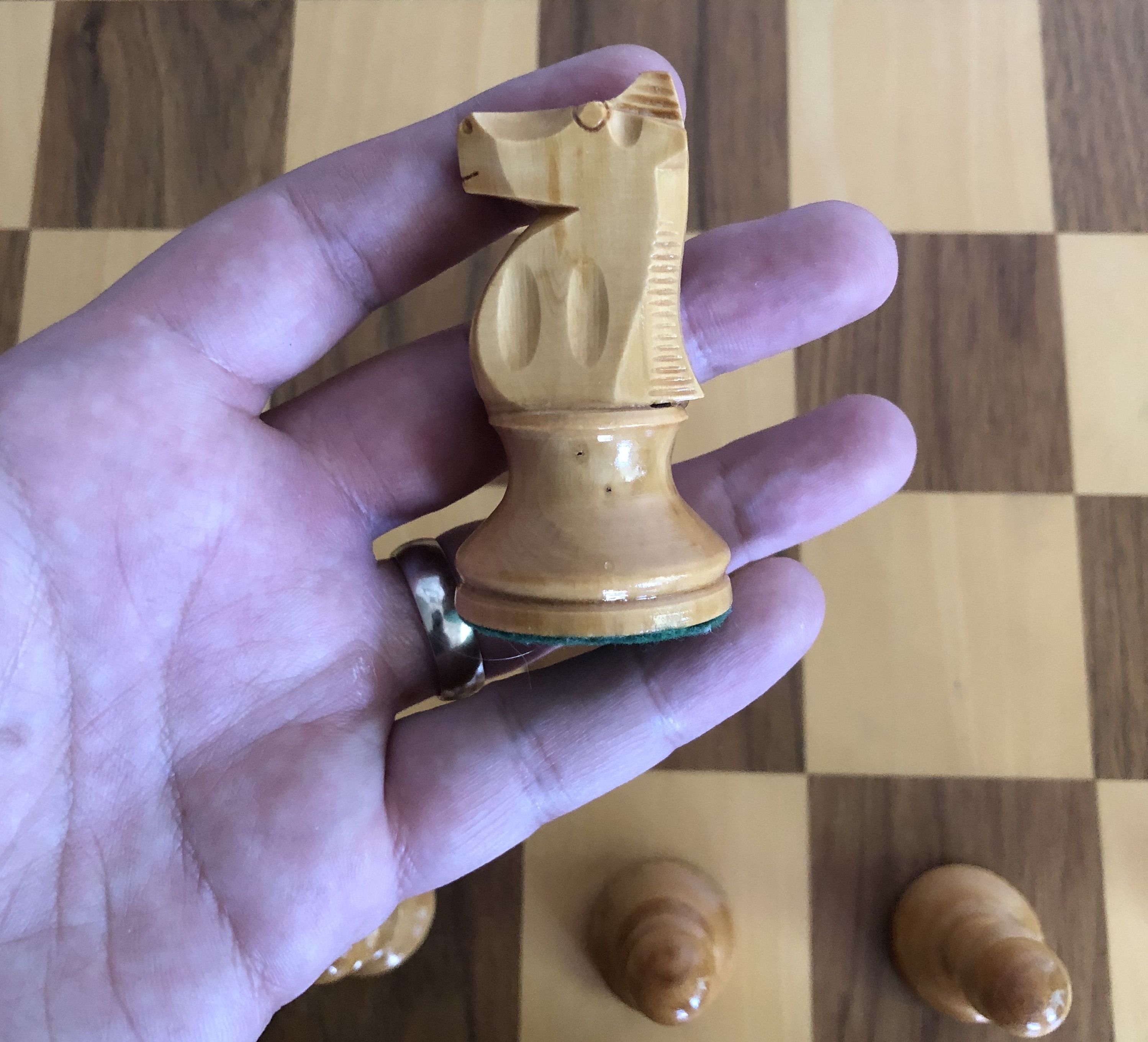
The knight (and all of the pieces) have become the standard in the United States and were used in many US Championships, the 1974 Nice Olympiad, and other international events. The 3.75" king, the queen design, the measurements for the knights, bishops, and pawns are all standard sizes for US Chess tournaments. Here is the full view of a vintage lacquered Lardy set from the 1970s displayed on a Drueke board:
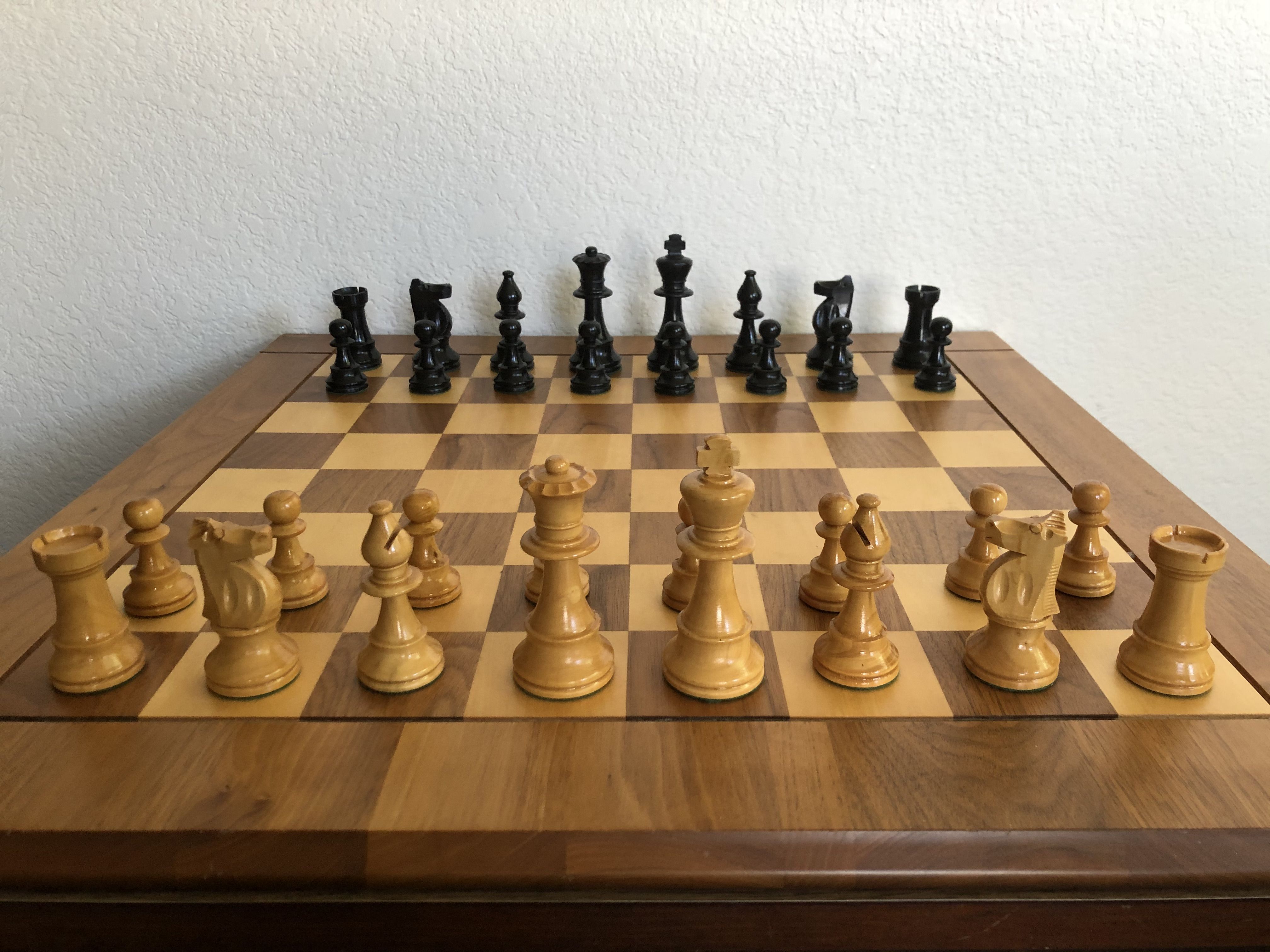
Soviet Sets
There are many Soviet and Russian sets and a very large community that collects them. The Tal set was used from the 1940s through the 1970s and was featured on the cover of Tal's book The Life and Games of Mikhail Tal. After the Tal set, there were multiple Grandmaster set design iterations that were being produced through 1990. These sets, and more, have all been used in various Soviet and Russian tournaments and international competitions throughout history, but the most iconic Soviet set is the Botvinnik-Flohr II set (also known as the BFII).
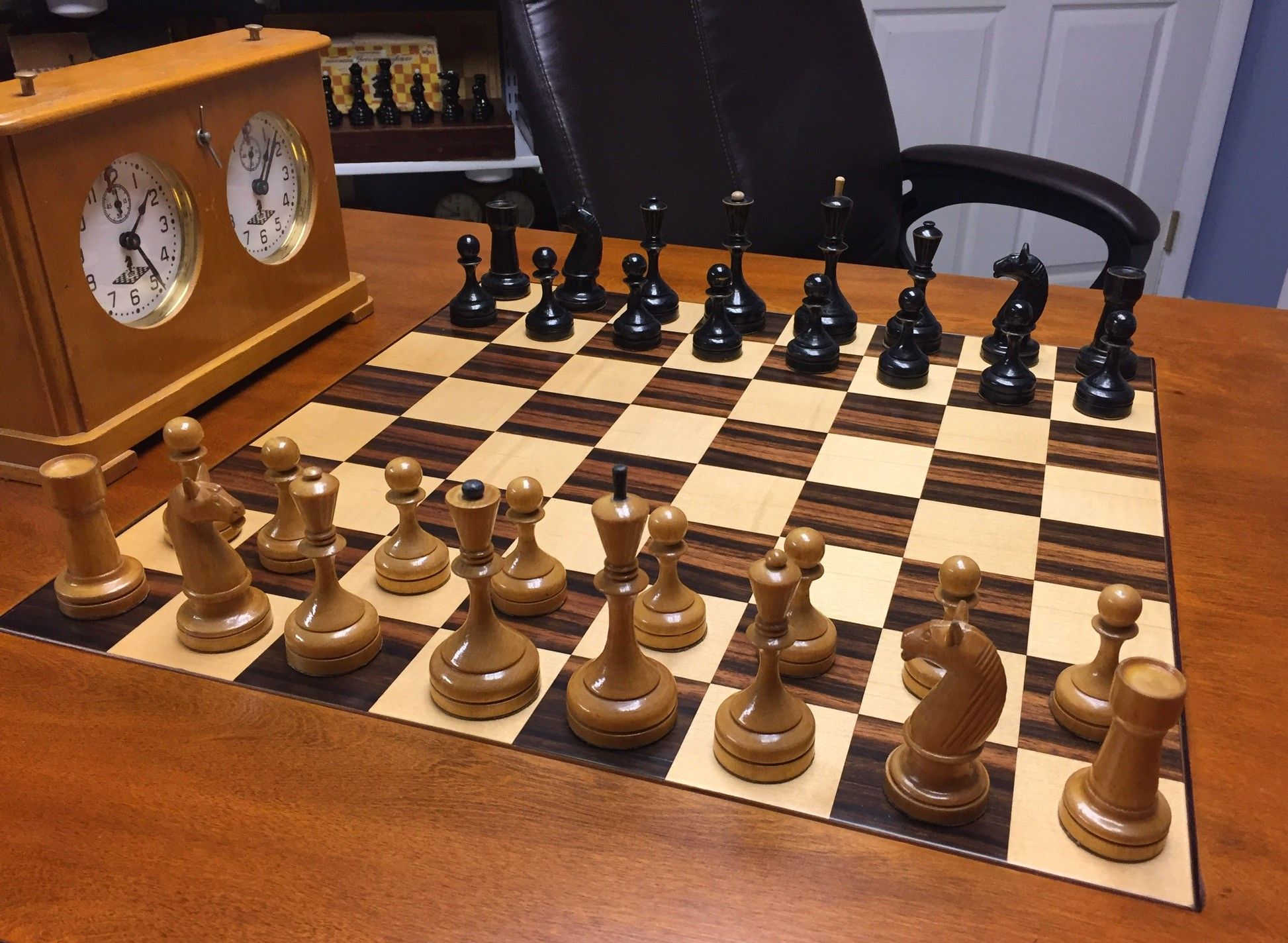
Aesthetically, the BFII is known for its swan-like knight profile, the absence of a cross on the top of the king (standard for most Soviet sets), and the slender tapered stems from the large bases on the king, queen, and bishop. The BFII is the target Soviet set for most chess set collectors because of its appearance, rarity, and historical significance. It was used longer than any other Soviet set and was featured in multiple international tournaments, multiple Soviet Championships, and the 1956 Moscow Olympiad.
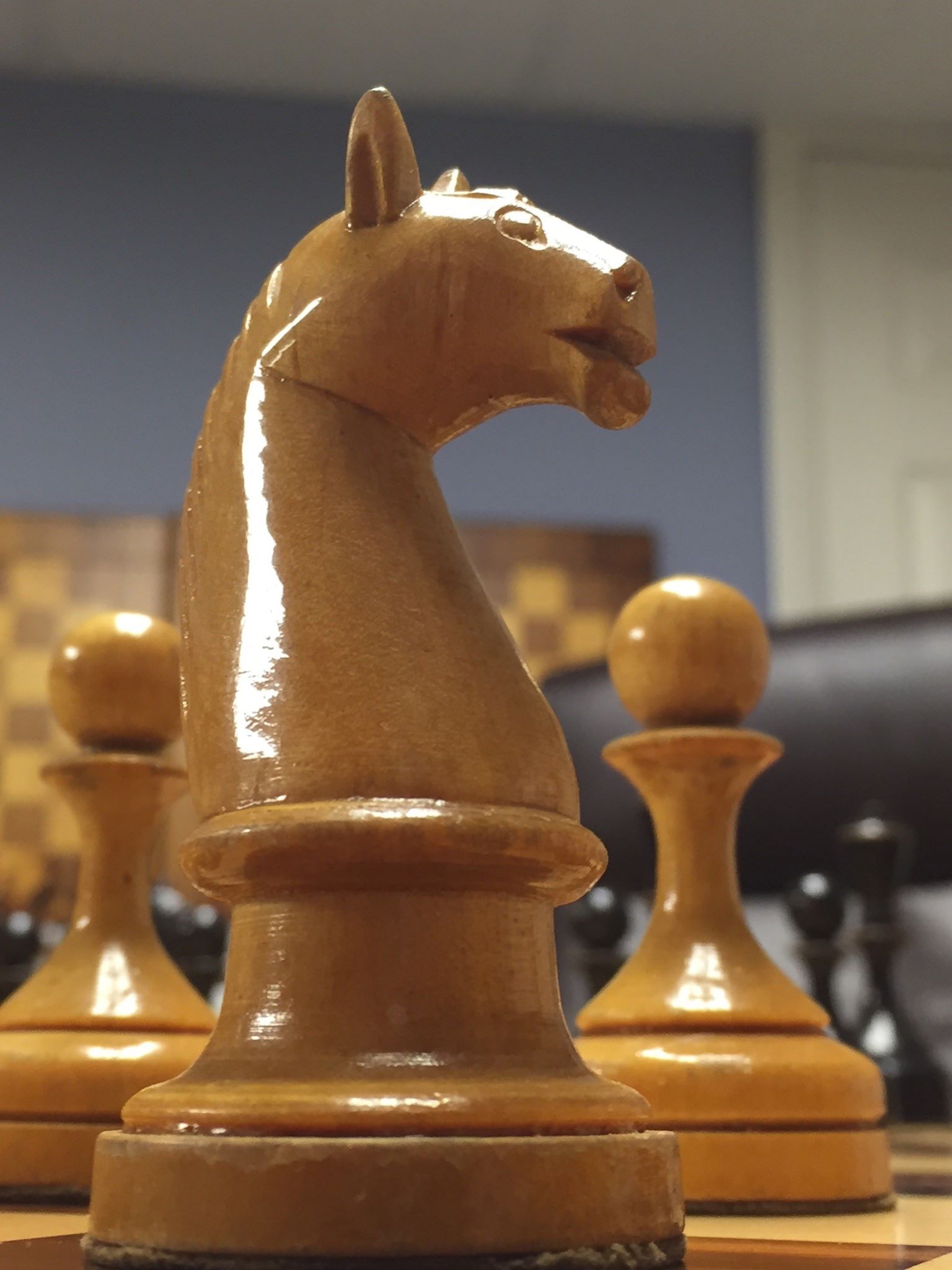
According to Soviet chess set expert and respected collector, Chuck Grau (who is an admin of many chess set groups on Facebook, including the Shakhmatnyye Kollektsionery: Soviet and Russian Chess Sets group), the BFII was initially introduced in the 1934 Leningrad tournament and is named after GM Mikhail Botvinnik and GM Salo Flohr because they tied for first place in the 1935 Moscow International tournament ahead of World Champions Emanuel Lasker and Jose Raul Capablanca.
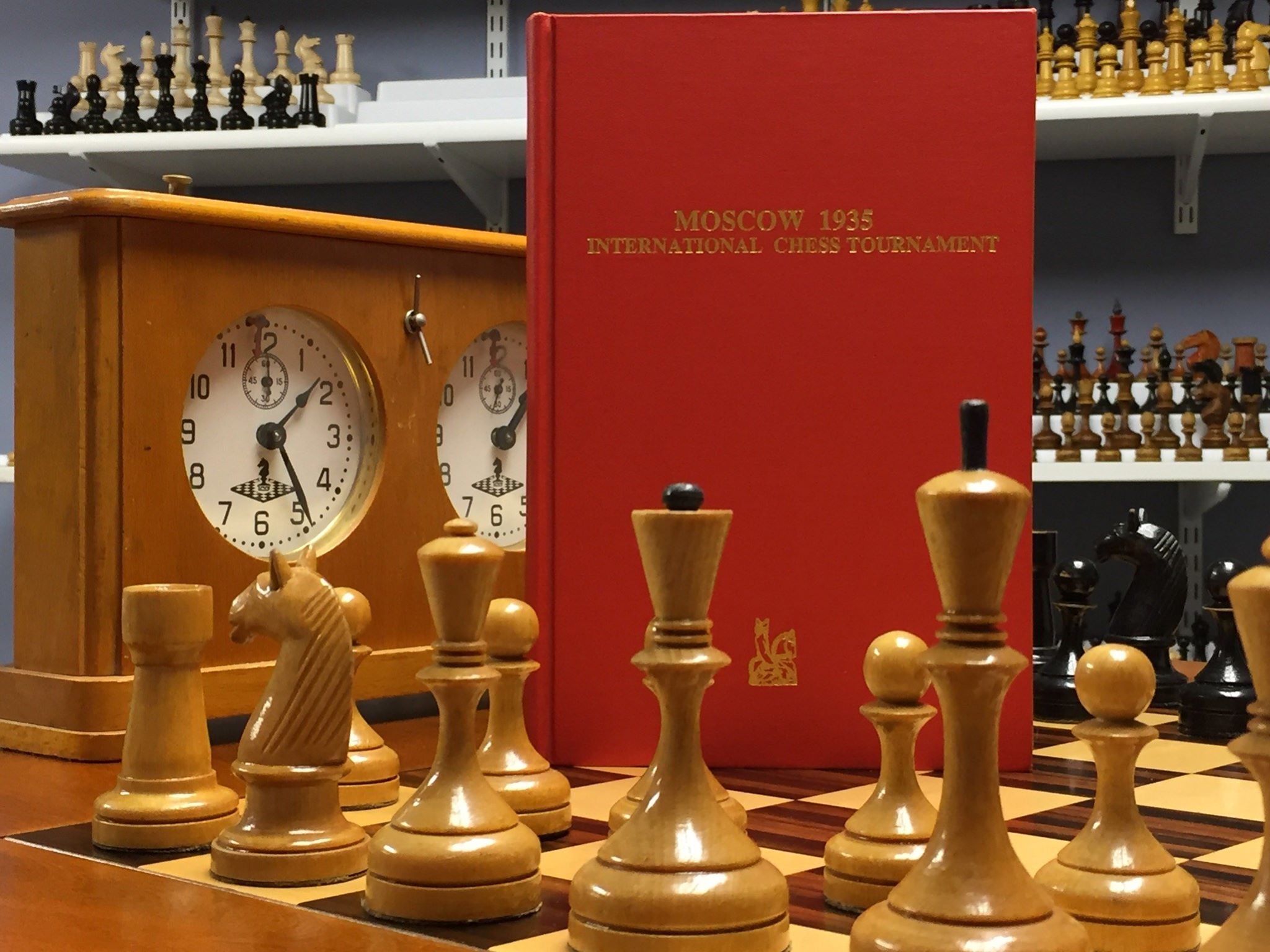
Dubrovnik Sets
The Dubrovnik design was initially introduced at the 1950 Dubrovnik Olympiad and was GM Bobby Fischer's favorite set. He is seen in many pictures and images using his Dubrovnik set, including his Life Magazine cover.
There were only 50 Dubrovnik sets originally created (one of these sets was used for the 1992 Fischer-GM Boris Spassky rematch), and the second design of Dubrovnik sets (also referred to as the Dubrovnik II) was released to the public in the 1970s. The incredible knight is one of the memorable design choices that makes this set stand out. Here is a reproduction of the original Dubrovnik knight, hand-carved by Noj:
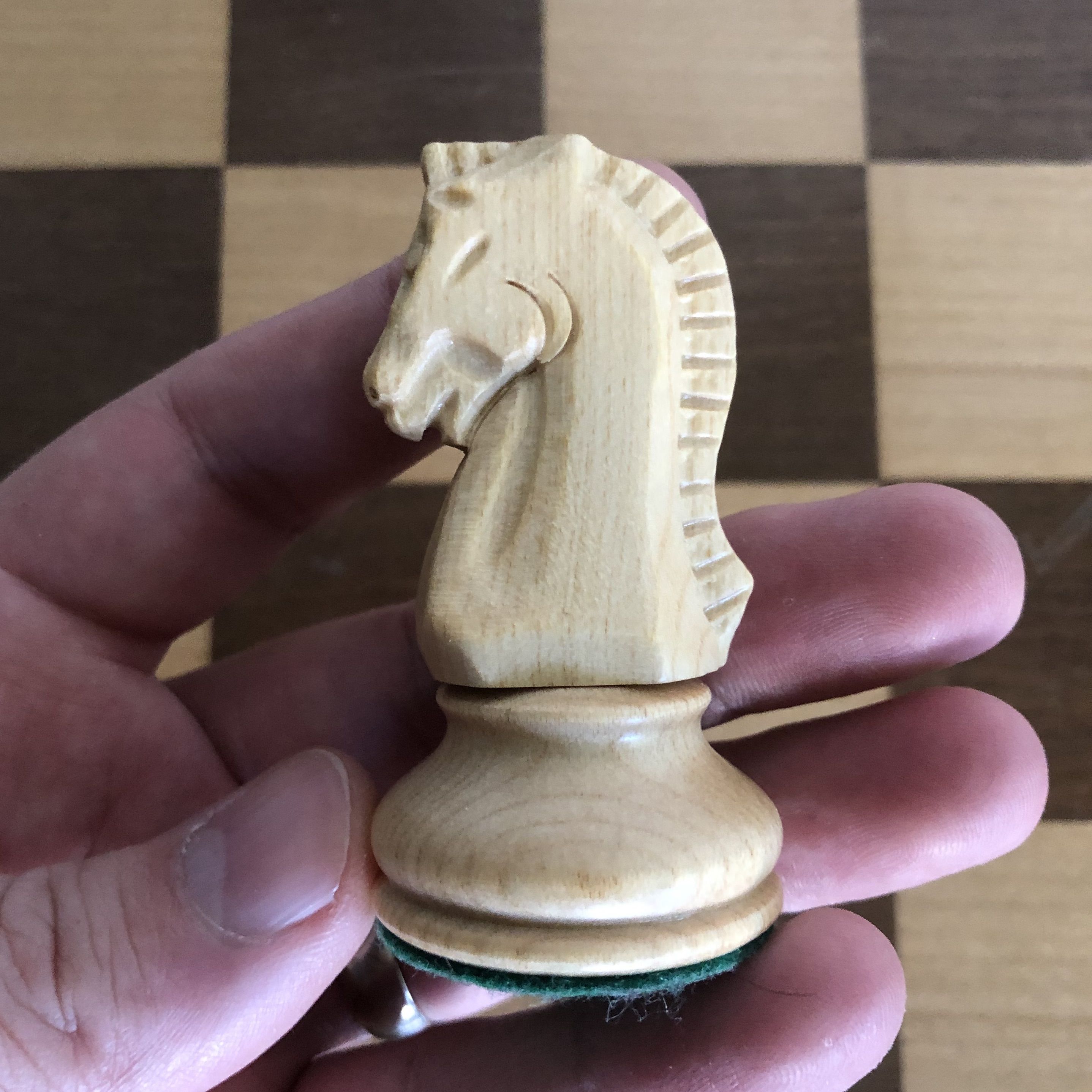
This set is known for its great durability, the fact that the pieces are smoother and have a more rounded feel (making it an excellent set to play with), and most notably the opposite-colored finials (the small orb or ball on top of the bishop). It should also be noted that most Dubrovnik sets do not have a cross on top of the King.
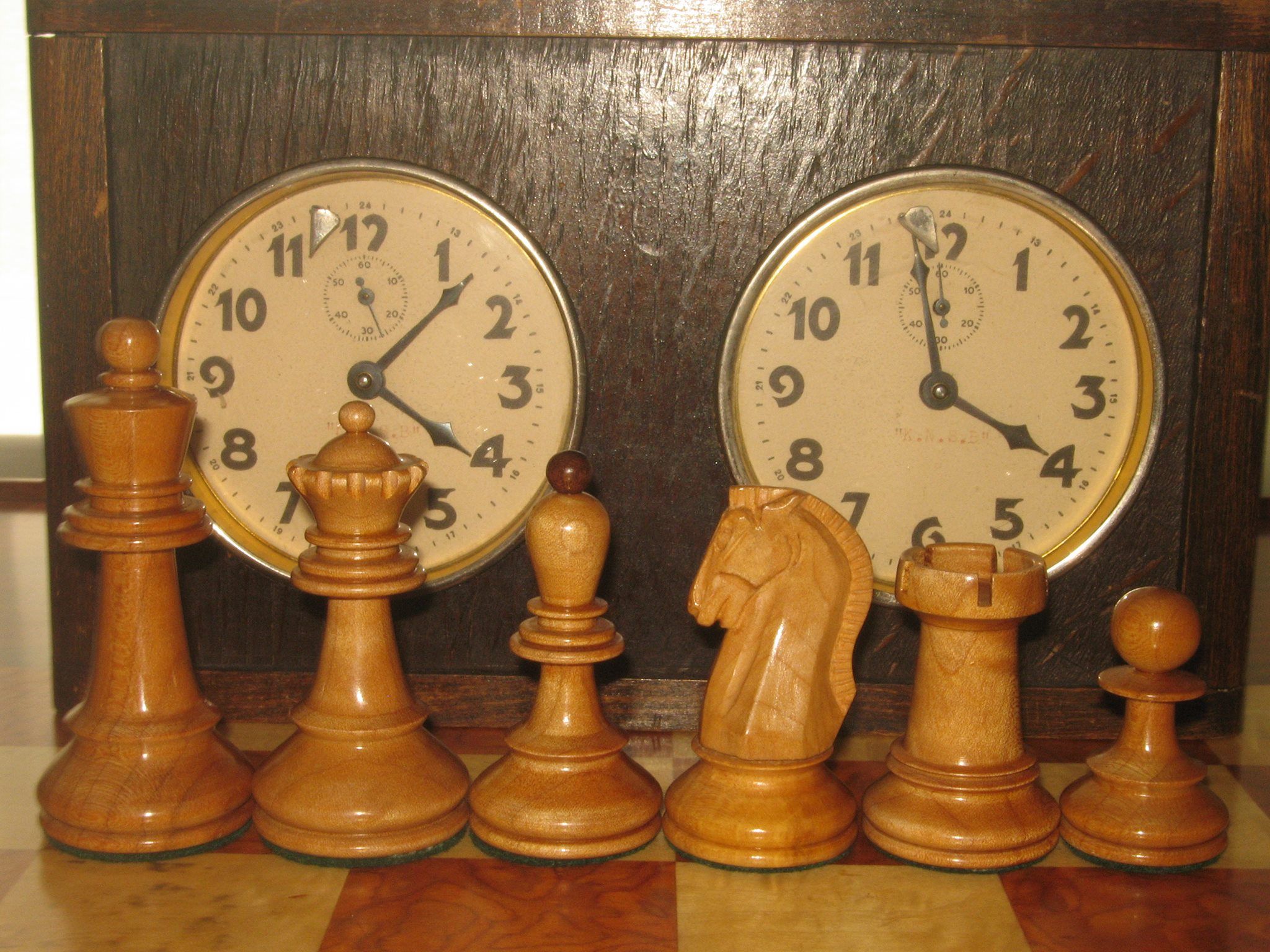
Original Dubrovnik sets are very rare and valuable. Many reproductions have been created for both versions of the Dubrovnik, but many chess set producers notoriously get the knight wrong (often making it look like a unicorn).
In the opinion of most Dubrovnik set collectors (and myself), the best reproductions are made by Noj—a family-owned company based in Slovenia. Many feel that Gabriel Coss' reproduction is another good option and that Staunton Castle's 1950 Dubrovnik reproduction (pictured below) is a strong reproduction as well.
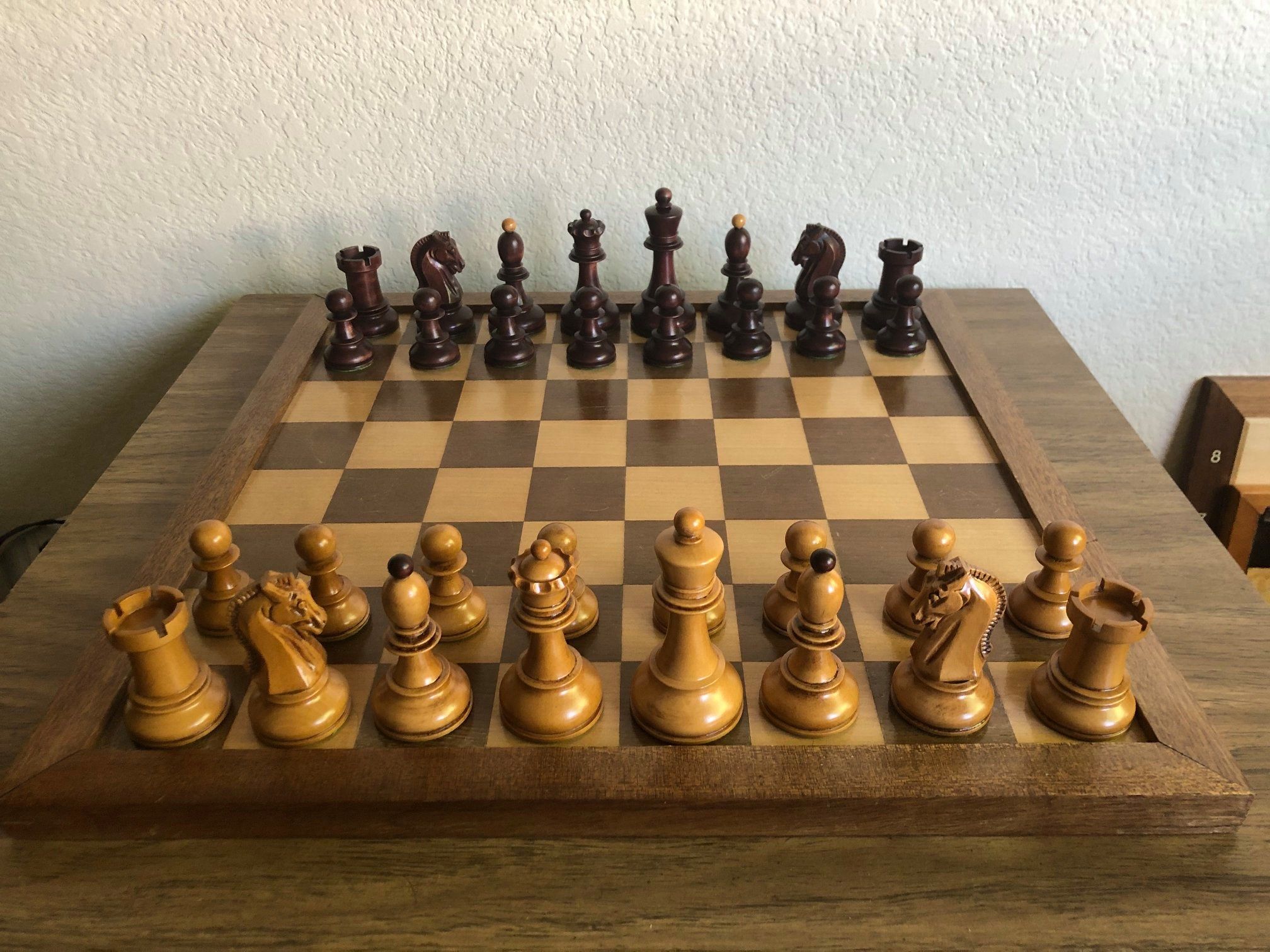
Jaques Sets
Jaques sets are the crown jewel for most chess set collectors. This is the set design that standardized tournament chess sets and the Staunton design is the basis for almost all tournament sets today. Before the Jaques sets were introduced, many different types of chess sets were used in serious matches and club settings. Designs like the St. George and regency sets were quite popular before 1849, and probably difficult to play on.
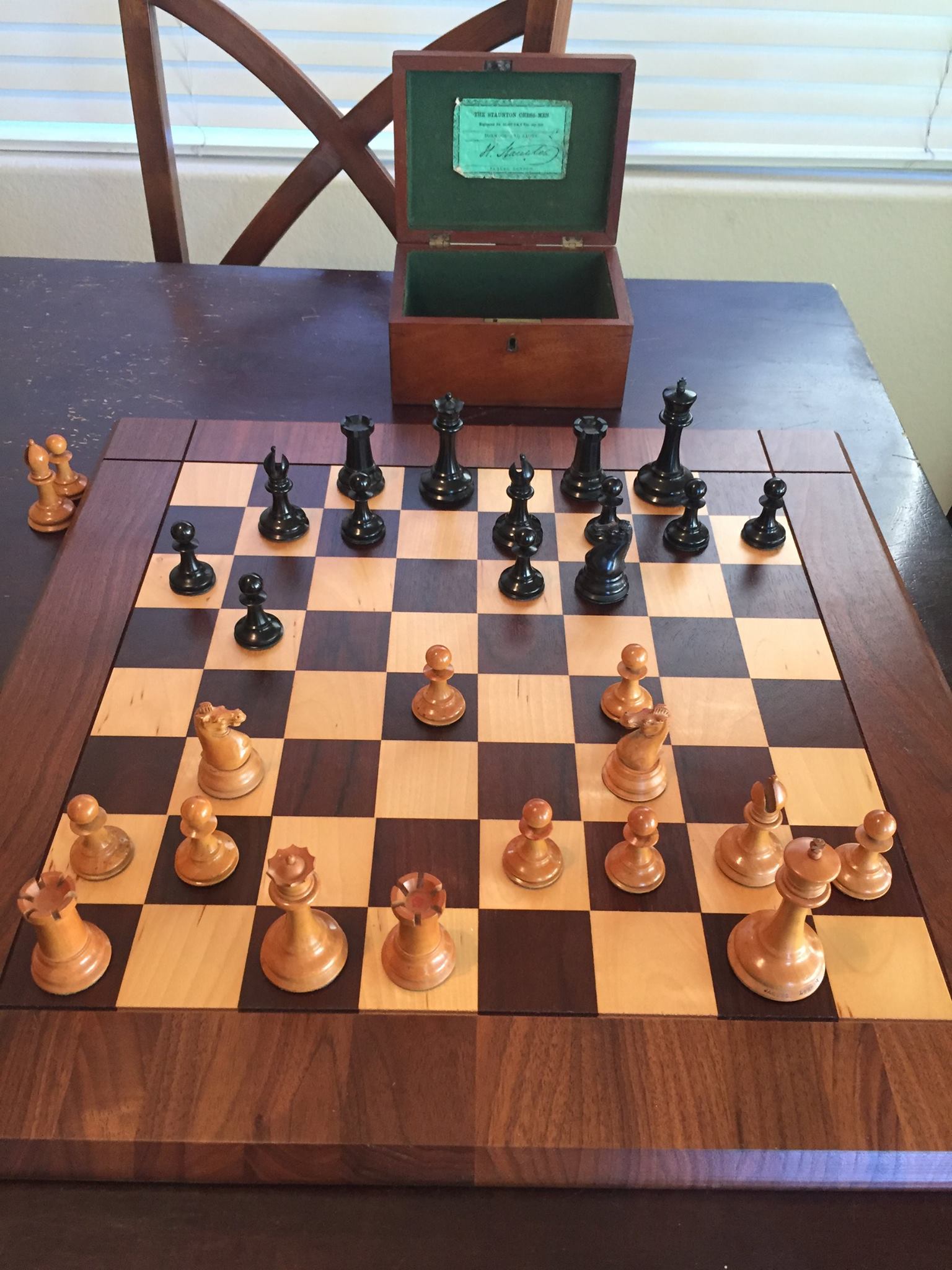
The Staunton design was created by Nathaniel Cooke and was endorsed by the famous English master Howard Staunton. The sets were made by Jaques of London, who still create their sets today. Original Jaques sets have "Jaques London" stamped on the base of the king and have one knight and one rook stamped on the top of the piece to differentiate the "king's knight" or "king's rook" (This is for older forms of chess notation.).
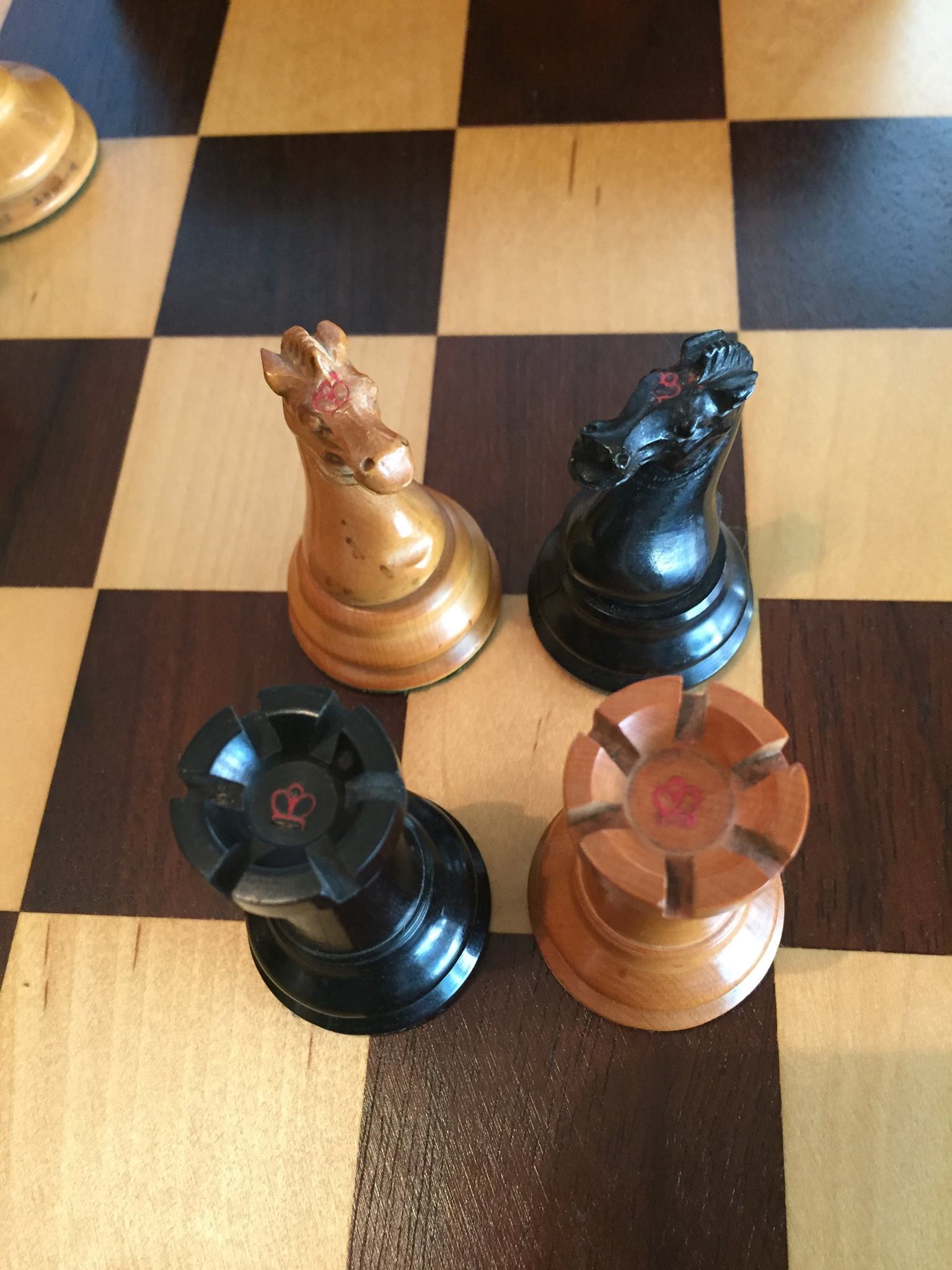
There are many different types of Jaques sets, and there are multiple books created for the categorization of the different Jaques styles. Original Jaques sets are mainly differentiated by the style of the knight, and the sets are generally named after the strongest player of the time (e.g. The "Morphy knight" was created in 1851, with the "Anderssen knight" being created in 1855 and so on.).

Jaques sets became the standard chess set for clubs, matches, and serious competitions and were used in multiple world championship matches (including the 1972 Fischer-Spassky World Championship match). These sets are reproduced by many companies today, including the House of Staunton. Original Jaques sets are extremely expensive due to their rarity, age, and historical value.

I hope you enjoyed a brief look at these historical chess set designs and a peek into the world of chess set collecting. Which of these sets is your favorite? Do you have a favorite that didn't make this list? Let us know in the comments below!
